by Jamie Oliver
Insects & Spiders
Insects and spiders belong to the Arthropod phylum (Euarthopoda), which encompasses invertebrates with a hard exoskeleton, segmented bodies and paired jointed appendages. Crustaceans, centipedes, millipedes and many other lesser known insect-like invertebrates are also Arthropods. Paluma has a very high diversity of arthropod species, but many are either difficult to find or, once found, very hard to identify. The following species are quite common around Paluma:
1. Ulysses Butterfly (Papilio ulysses)
This is one of the most recognisable butterflies in north Queensland and an iconic resident of our tropical rainforests. The brilliant iridescent blue upper surface of its wings makes it highly visible in open sunny areas, and it is commonly seen foraging around the village. This large (~14cm) butterfly is a member of the swallowtail family (Papilionidae) and can be found in New Guinea and surrounding islands as well as in NE Australia. The underwings are not nearly as colourful with black and grey-brown patterning and orange-brown spots along the margin of the hindwing. Males and female are very similar in appearance but the female can often be recognised by the small blue crescents at the bottom of the hindwings. The favoured host plant for the Ulysses is Melicope species (Euodias or Corkwoods).
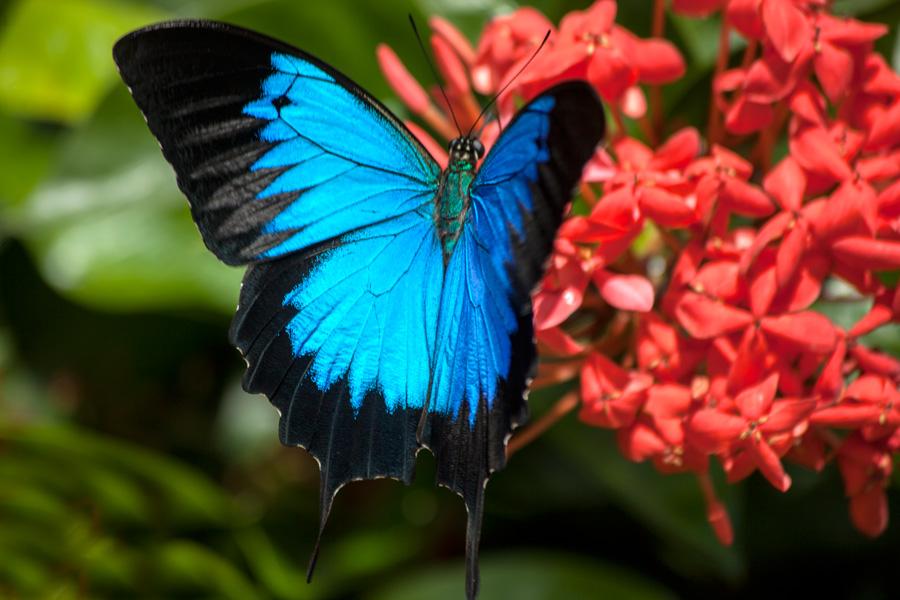
_(9874865575).jpg?bwg=1616307457)
2. Australian Rhinoceros Beetle (Xylotrupes australicus)
This very distinctive and large (up to 6cm) beetle has two large horns (upper and lower) with forked ends. Horns only occur on males. The females are similar in size but without horns.
Rhinoceros beetles are harmless but can make a hissing noise when threatened and their claws are sharp enough to grip tightly to (but not injure) a finger or hand. The horns are used by males to fight each other during the breeding season. In Thailand they are kept as pets and for gambling over beetle fights.
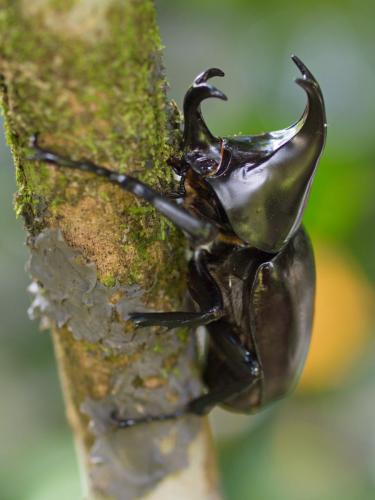

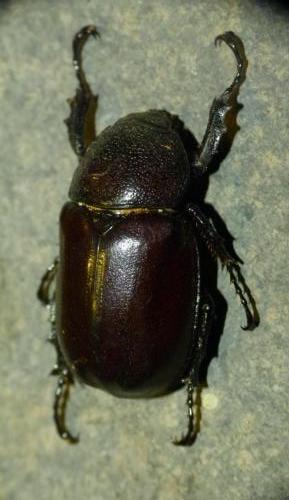
Adult beetles feed on bark. The larvae burrow into and eat leaf litter and rotting wood and are often found in mulch or old compost piles in Paluma gardens. They can take up to two years to reach full size, by which time they can fill the palm of your hand.
Despite their armoured and heavy appearance Rhinoceros Beetles have fully functional wings under their carapace and are strong flyers. Males are nocturnal and attracted to light. The Australian Rhinoceros Beetle occurs in moist forests in eastern Australia and the Northern Territory. It has previously been referred to as Xylotrupes gideon or Xylotrupes ulysses, but current thinking is that these species do not occur in Australia and that our Rhinoceros beetle (X. australicus) is a separate species.
3. Cairns Birdwing (Ornithoptera euphorion)
The Cairns Birdwing is another iconic (and endemic) butterfly of the Queensland tropics, occurring in rainforests from Cooktown to Mackay. It is the largest endemic butterfly in Australia (its almost identical cousin, the northern or New Guinea Birdwing is the largest Australian butterfly).
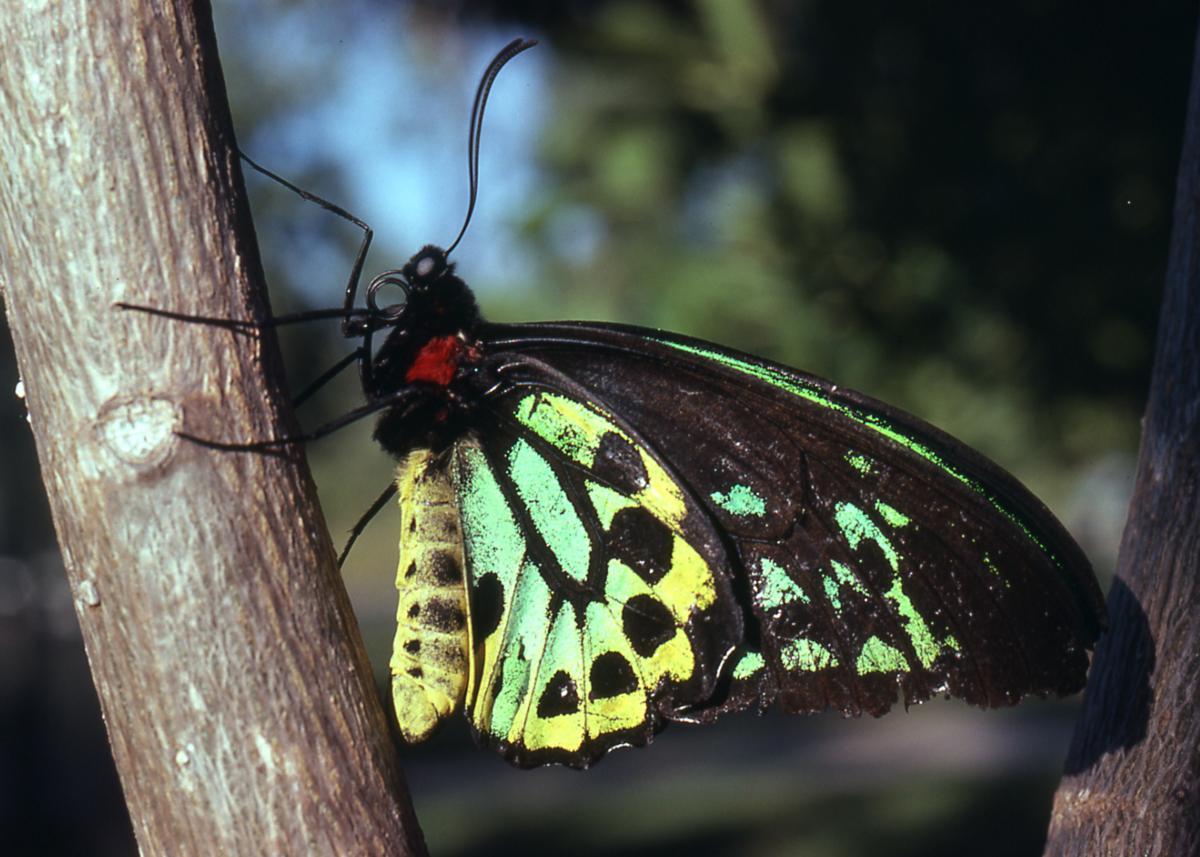
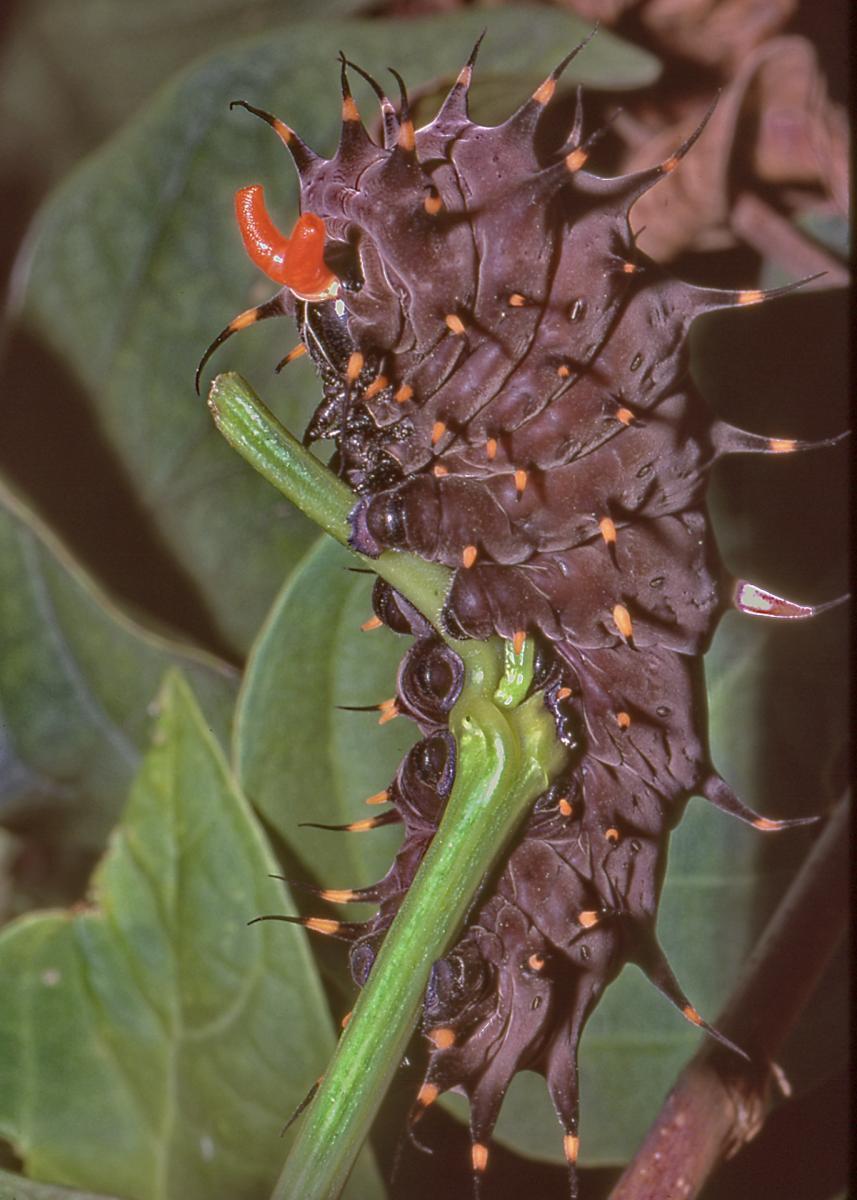
Male Cairns Birdwings can have wingspans up to 12.5cm, and have brilliant green, black and yellow wings. The larger females (15cm wingspan) have similar markings but in shades of grey and white. Both sexes have bright yellow abdomens with a blotch of red on the side of the thorax. In gardens, adults are attracted to Lantana, Hibiscus and Bouganvillea flowers. Around Paluma they also feed on Agapanthus and the red Pagoda plant.
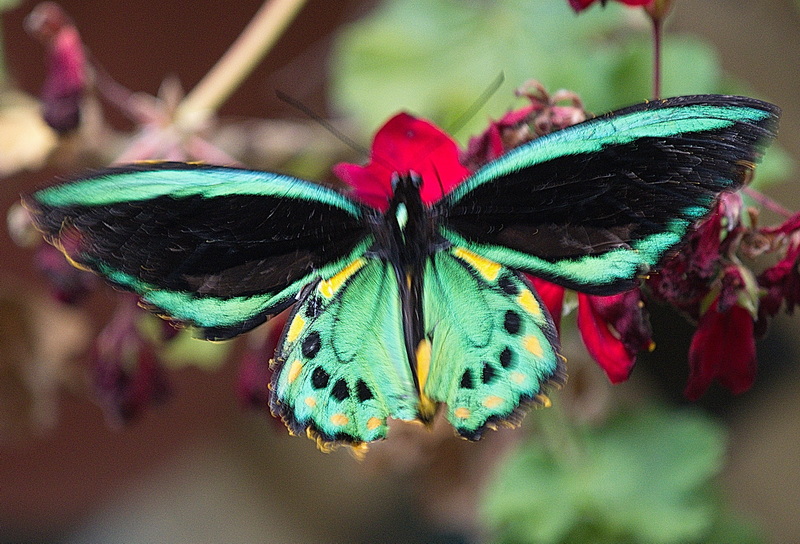
The main food plants of the larvae are Aristolochia acuminata (sometimes called by its synonym A. tagala)in lcoastal areasbelow 500 m and Pararistolochia deltantha in upland forests including Paluma. Mature larvae can be as thick and long as your thumb. If disturbed, they extrude distinctive reddish horns (osmeterium) that produce a fetid terpene compound to deter predators.
4. Golden Orb Spider (Nephila pilipes)
The Golden Orb spiders (genus Nephila) are a group of large web building spiders that have grey abdomens and swollen and often yellow leg joints. The silk of the webs is distinctly yellow and surprisingly strong. In some South Pacific islands the silk is formed into a ball by local fishers and used as a sticky lure to entangle the serrated beaks of garfish.

In Paluma the common species is Nephila pilipes, and it can be seen in forest clearings and in gardens around the village. Despite their daunting size the bite of this spider is not dangerous. It captures and eats a variety of insects and the occasional small lizard that gets caught in the web. Very small birds have been recorded (very rarely) in Nephila webs, but it is highly unlikely that they would be fed on.

Two other spiders can frequently be seen sharing the web of the large female Nephila. The first is a small brown spider the size of a fingernail. This is actually the male Nephila, which can be distinguished by the enlarged brown palps near the mouth and shaped a bit like boxing gloves. Males of many orb-building spiders live a precarious existence, driven by an attraction to the much larger females, who must be suitably seduced by a complex pattern of plucks to the web before they are safe to approach for mating purposes. If the seduction fails, or wears off too soon, the hapless males are likely to be devoured by the target of their attraction.

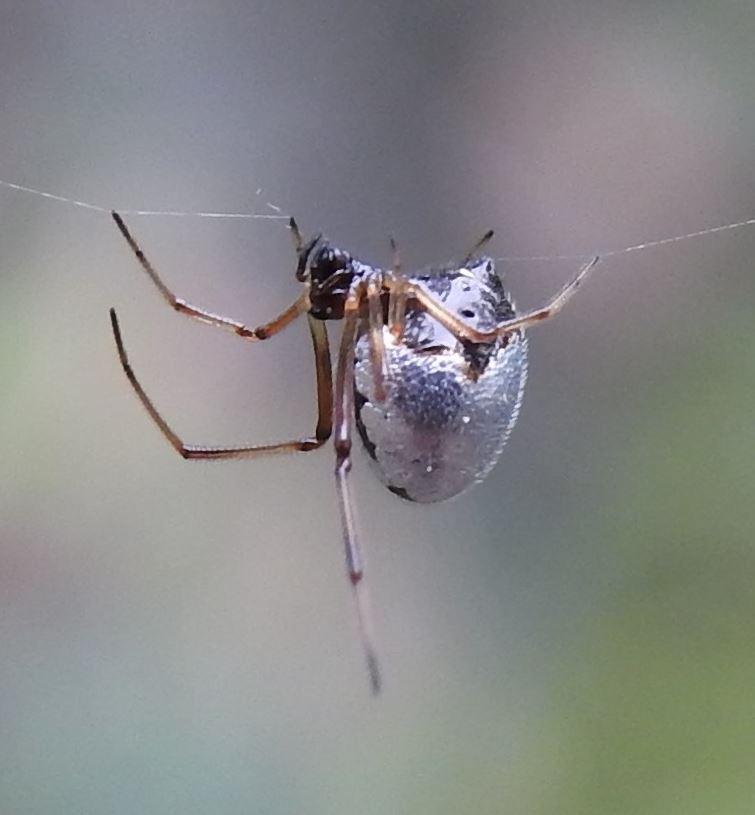
The second spider often found on Nephila webs has a tiny silver teardrop body and belongs to the genus Argyrodes (most likely Argyrodes antipodianus). These spiders act as “kleptoparasites” stealing smaller food items from the larger spider’s web, or even from its mouth. To avoid being eaten by Nephila it builds a separate web intertwining its host’s, thus avoiding attention from its movements in search of prey to steal.
5. Jungle Huntsman Spider (Heteropoda jugulans)
The jungle (or brown) huntsman spider is another large, long-legged spider that is commonly seen in and around houses and sheds in the village. Its long legs (longer in front) are often held in a crab-like pose. This spider does not build a nest, but hunts at night chasing small insects, which it kills with a bite to the neck from its curved fangs. Although capable of biting humans, the bite produces only local pain and redness for less than an hour. They tend to be timid animals and will quickly flee if approached. During the day they will hide under the flaking bark of trees or in the cracks and corners of walls or behind pictures in houses.


For those keen on learning more about our surrounds, here’s the details of two new reference books I bought myself. Indulge.
https://www.publish.csiro.au/book/6899/
A Field Guide to Spiders of Australia (2018) – purchased recently from CSIRO for $49.95
https://shop.fungimap.org.au/product/fungi-down-under-the-fungimap-guide-to-australian-fungi-pat-grey-ed-grey/
Fungi Down Under: the Fungimap guide to Australian Fungi (2021) -purchased recently from Fungimap Inc. for $35.00
PS I am impressed that Michele got so close to the huntsman!